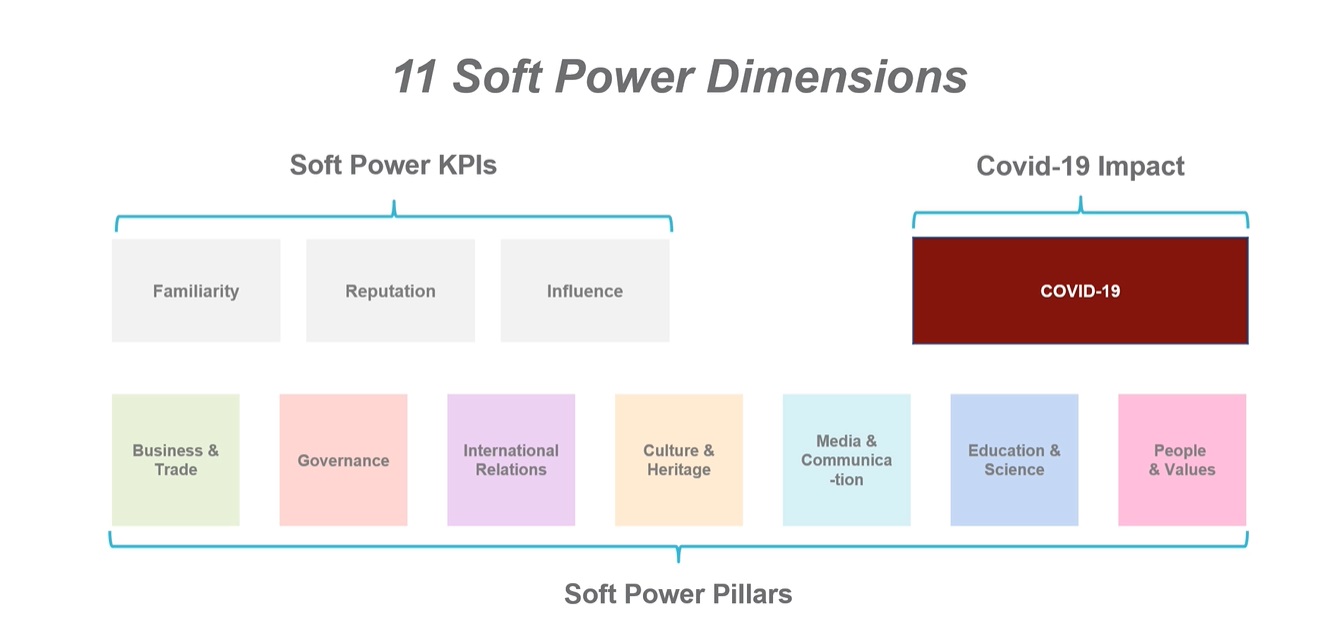India is struggling to convert its wonderful soft power into meaningful hard power.
Soft Power and Hard Power - India's developmental imperatives
- What is it: "Soft power" is the ability of a country to persuade others to do what it wants without resorting to force or coercion. Soft power lies in a country’s attractiveness and comes from three resources: its culture, its political values, and its foreign policies.
- Where does India stand: According to Brand Finance’s Global Soft Power Index, India ranks 27th in terms of soft power. India’s main challenge has been to timely deliver on International projects especially on infrastructure projects. For eg. Iran’s Chabahar Port. Indian ethos and practices has helped it build a benevolent image and tremendous goodwill globally, but it has to be backed with quality project delivery.
- India’s delivery framework: India’s development cooperation has converged to a framework with five pillars -
- Capacity building - India focuses on (i) providing training in India, (ii) sending teams of experts to partner countries and (iii) providing equipment for project sites. India has also taken up larger issues at various multilateral forums including the World Trade Organization (WTO) and the World Intellectual Property Organization (WIPO).
- Concessional finance - Concessional financing constitutes close to 70% of India’s development cooperation portfolio. Development assistance in the form of concessional Lines of Credit (LOCs) is extended by the Government of India under the Indian Development and Economic Assistance Scheme (IDEAS) through the Exim Bank of India. In total 306 LOCs worth US$ 30.59 billion have been extended to 65 countries.
- Technology sharing - Innovation and entrepreneurship should be the soft power of choice both within the country and outside. For instance, in Ethiopia, Indian engineers provided support and training in areas such as irrigation, electrical power and railway management.
- Grants - India provides development assistance of $6.48 billion and receives assistance of $6.09 billion annually from key partners as Official Development Assistance (ODA).
- Trade - By providing duty-free and quota-free access to the Indian market. India was one of the first few countries that announced duty free, quota free access to low income countries. Indian private investment in the world has also surged over a period of time with major investments in telecommunications, IT, energy, and automobile sectors.
- Problem areas: India needs an independent development partnership agency that develops long-term and short-term strategies, identifies priorities, builds knowledge and facilitates learning. It needs to remove internal hurdles, such as policy and bureaucratic delays, to meet its infrastructure targets.
- With limited capacity to fund infrastructure projects, India needs to rationally allot its funds, keeping in mind its strategic objectives. Improving the Indian economy and opening up the market can help India to accumulate funds for international projects.
- India’s neighbours have often complained of India making big promises but suffering from a delivery deficit. This is the case with most countries in which India has taken up projects, for instance, road and railway lines, establishing integrated border checkpoints, and hydropower projects.
- Protectionism is leading to a significant impact on economic diplomacy. India stood at rank 24 out of 25 countries in the Asia-Pacific region in terms of trade openness (as per an Asian Development Bank (ADB) report). Integrated Check Posts set up at borders have suffered under cumbersome procedures, like additional checks of trucks and delays in paperwork, that consume both time and profits.
- Solutions: A specialised agency for proficient delivery of outcomes is the need of the hour. For example, In 2018, China founded its international development cooperation agency.
- Such an agency must work towards Sustainable Development Goals (SDGs) coordinating the government, private sector, academia and civil society.
- Exploring innovative public–private partnership (PPP) models with Indian businesses to leverage their expertise in helping realise India’s development cooperation goals.
- Covid-19 showed that cooperation among countries can accelerate the response within individual nations and across regions during a global health crisis. It involves creating, adapting, transferring, and sharing knowledge and experiences to improve health, while making the most of existing resources and capacities.
- A non-sovereign window like the private sector window of Asian Development Bank, would provide greater flexibility and bandwidth. In addition to greenfield projects, the fund may take up incomplete projects and prepare future timelines for their execution.
- India needs to work on smoothening clearance procedures, import policy barriers, testing and certification requirements, anti-dumping and countervailing measures. India must increase its investments and trade with neighboring countries to reap the benefits of greater regional and economic integration, making India open rather than being closed to its neighbors’ economies.
- Summary: It is time India restructures its development finance apparatus for deeper engagement and to address the rapidly evolving newer competitive development financing landscape. India’s own development experience is also evolving with programmes like the JAM Trinity, Ayushman Bharat and other initiatives like Gati Shakti - the learnings from which should be absorbed in the portfolio to be shared with fellow developing countries.
- EXAM QUESTIONS: (1) Explain the role "soft power" of a nation plays in its global ambitions. (2) What is "soft power" and how does it stand apart from "hard power"? Explain.
#hardpower #Softpower #India #Infrastructure
* Content sourced from free internet sources (publications, PIB site, international sites, etc.). Take your own subscriptions. Copyrights acknowledged.


















COMMENTS